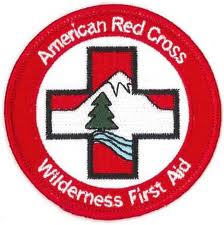In September, 2017, BSA announced a revised curriculum for wilderness first aid courses for BSA volunteers. The new curriculum updates the prior 2010 wilderness first aid curriculum.
The revised curriculum may be found here.
By way of important change, while the course is still 16 hours in length, the core curriculum is reduced to 12 hours, with the remaining 4 hours being elective in nature. Re-certification remains at 2 years, and age 14 is the minimum age for a participant.

The core 12 hours includes the following subjects:
- Introduction
- Patient Assessment
- Chest Injuries
- Shock and Heart Attack
- Head and Spine Injuries
- Bone and Joint Injuries
- Wounds and Wound Infection
- Allergies and Anaphylaxis
- Scenarios
The remaining four hours of electives may be chosen from the following:
- Hypothermia
- Heat Problems
- Lightning
- Altitude Sickness
- Abdominal Problems
- Submersion Incidents
- Wilderness First Aid Kits
One advantage of the use of “electives” is that the volunteer’s training can be customized to fit the environment within which the first aid skills may be required. For instance, volunteers preparing for an aquatic adventure should find “hypothermia” and “submersion incidents” to be of particular interest. Volunteers heading for the mountains should find “altitude sickness” and “lightning” to be of particular interest. Volunteers anticipating elevated temperature conditions should find “heat problems” to be of particular interest.
Clearly, the intended locale may present challenges best addressed by one or more of the electives. Indeed, instances of Scouts or volunteers suffering from hypothermia due to immersion, altitude sickness, and the effects of heat are not difficult to find on the web, in addition to heart attacks, lightning injuries, injuries from falling trees, among others.
It should be apparent that “wilderness” first aid skills are applicable to all BSA activities, not just high adventure activities. BSA volunteers should endeavor to be as trained as possible in first aid skills to be able to respond to first aid emergencies as they occur, irrespective of the location or activity.
Finally, courtesy of Dr. J. Brombach, EMT-P, M.D., an excellent discussion of the BSA Wilderness First Aid curriculum may be found at the website www.bsawildernessfirstaid.org.
